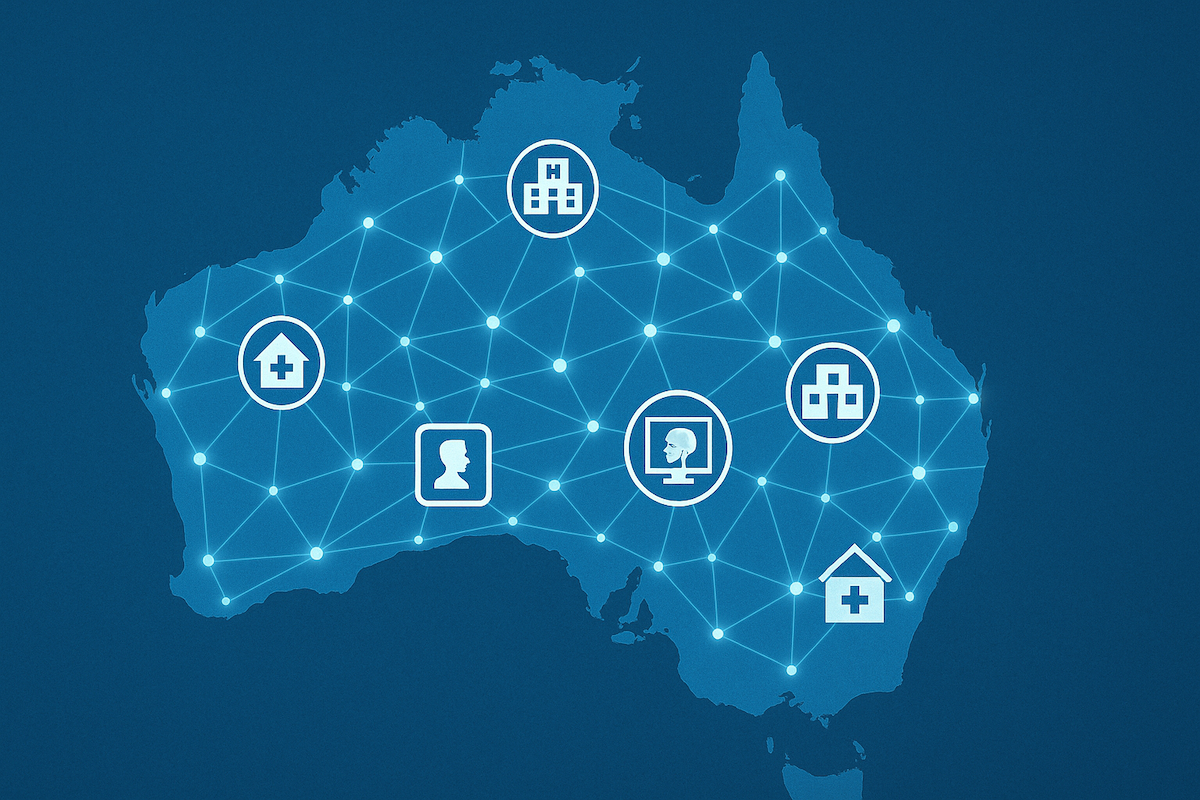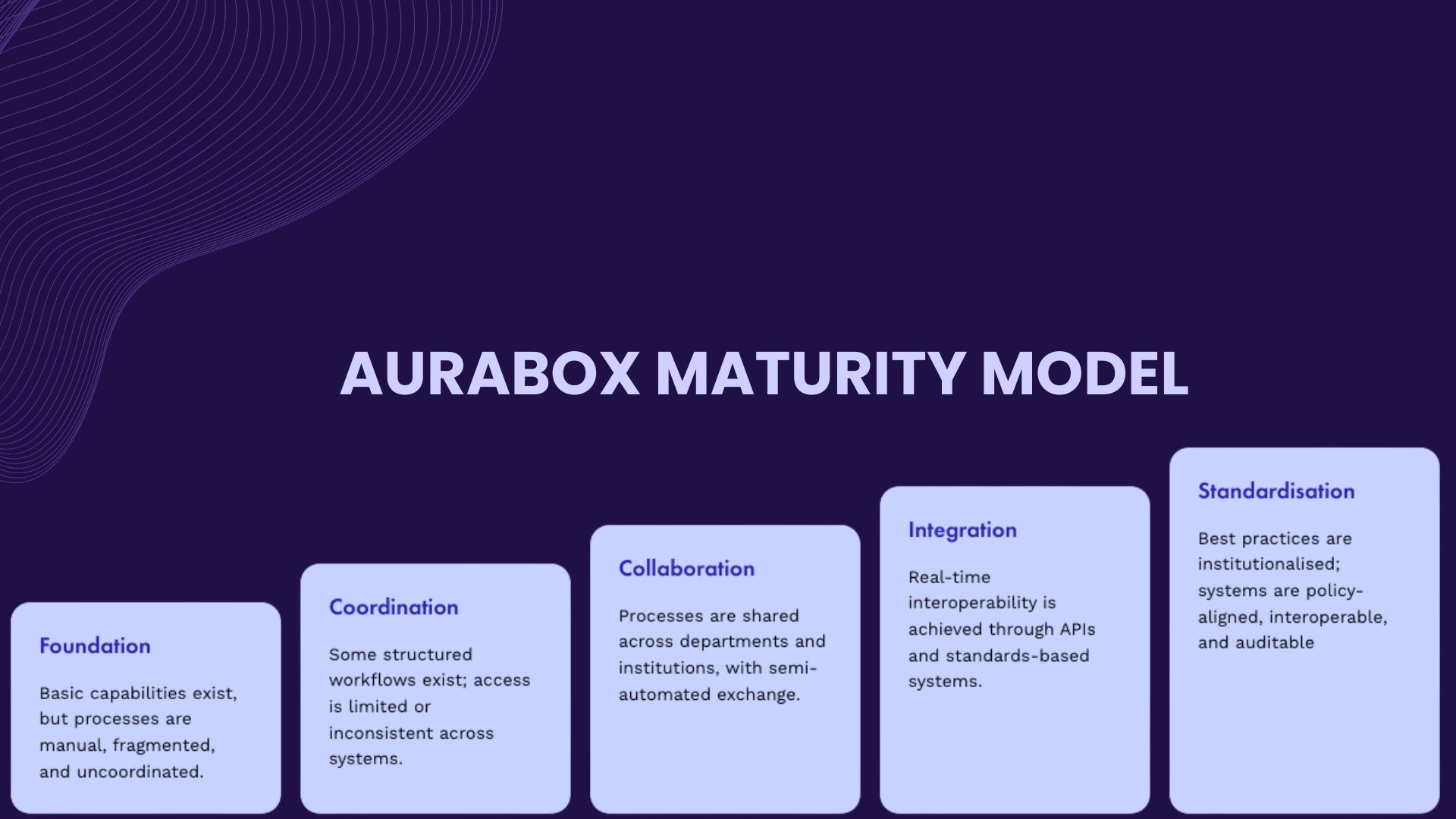How do you make it possible for everyone to access the medical imaging they need, when they need
This is the question we posed to ourselves when we started Aurabox in 2021. Born out of the frustrations of Dr Chaturica Athukorala—who saw firsthand the chaos created by poor access to medical imaging—Aurabox’s mission has always been to solve this fundamental issue that plagues the healthcare system. Since then, we’ve spent four years researching, talking, learning and building.
Today, we’re proud to announce the result of that work: the release of the Imaging Exchange Framework—a plan for national-scale medical imaging interoperability in Australia.
The Framework brings together four years of research and testing into an innovative, achievable plan to enable the automatic discovery and retrieval of medical imaging across Australia’s healthcare system. It combines several new innovations—specifically designed to fill critical gaps in the imaging interoperability ecosystem—with a policy framework that dovetails directly into the forthcoming HealthConnect infrastructure. And it does so with the minimum effort required of implementing organisations. Designed for iterative, local deployment using 100% open source technology, the Framework presents the first (and so far only) realistic model for national medical imaging interoperability.
Its purpose is twofold:
- To set out a plan for how medical imaging could be exchanged within the HealthConnect ecosystem.
- To provide a structured, technically grounded approach to connecting available technologies into an organised, scalable solution.
To support widespread adoption, the Framework is published under a Creative Commons licence. It is freely reusable by anyone working on imaging interoperability in Australia—or elsewhere.
Background
Medical imaging interoperability presents a uniquely stubborn challenge. Due to the technical constraints of DICOM—a protocol developed before the internet—no jurisdiction in the world has successfully integrated public and private imaging providers and consumers, let alone the broad and fragmented ecosystem of specialists, allied health professionals, researchers, trials or insurers.
Some regions have made progress by connecting public systems to a single, searchable instance, or by integrating select private providers into hospital systems. But these efforts still fall short of delivering the kind of seamless discovery and real-time retrieval capabilities clinicians and patients now expect.
The recent announcement that Australia’s HealthConnect will attempt to include medical imaging—alongside more conventional health data—raises significant questions about how such integration can be achieved. The problem isn’t clinical; it’s deeply technical. Nobody has yet found a scalable way to network, locate, and move imaging efficiently across an entire healthcare system.
Understanding the Problem
The Framework begins with a clear proposition: to solve medical imaging access, two fundamental problems must be addressed. Resolving these two issues would eliminate the majority of interoperability roadblocks.
1. Discovery
At present, it’s virtually impossible to determine what imaging exists for a given patient or where it might be stored. This challenge causes massive, largely undocumented administrative overhead. Clinicians and admin teams spend countless hours tracking down prior imaging—time that could be better spent on care delivery.
When imaging can’t be found, it’s often repeated. Estimates from international studies and Australian surveys suggest that up to 30% of all imaging may be unnecessary repeat scans. Solving the discovery problem could lead to significant improvements in health system efficiency and patient outcomes.
The good news is that the current HealthConnect architecture seems likely to address much of this. The remaining gap lies in connecting PACS systems into the FHIR-based ecosystem. The Framework offers a detailed proposal to ease this integration.
2. Retrieval
Discovery is not enough. Once a clinician knows where imaging is, they must be able to retrieve it—on demand, securely, and reliably.
Currently, this rarely happens. Imaging, when shared, is manually pushed by the holder via outdated methods—DICOM over VPN, file shares, CDs, or ad hoc workarounds. There is no standardised, scalable, web-based mechanism for retrieving entire studies or series in real time.
This is a major barrier to acute and emergency care, and a constant source of friction for everyday workflows. The Framework proposes a new mechanism to finally make seamless retrieval possible.
Technical Innovation
One of the key reasons this has never been achieved before is the inherent limitation of the DICOM protocol. DICOM is not compatible with internet-native architectures. It lacks modern security controls, cannot be networked at scale, and requires manual configuration to operate beyond a small number of endpoints. It is, in effect, a horse-and-cart in a world of high-speed motorways.
DICOMweb, its more modern cousin, is marginally better but remains inefficient at scale and is seldom used outside of viewer integrations. While FHIR provides a solid foundation for solving discovery, it offers little help for retrieval.
To address this capability gap, Aurabox is developing two key technologies:
JMIX: JSON Medical Imaging eXchange
JMIX is an envelope format that allows secure bulk transfers of DICOM imaging over the internet. It combines:
- Standard DICOM file export
- A JSON manifest and wrapper
- A simple RESTful API
- Security controls including perfect forward secrecy, encryption in transit, and sender assertions
In effect, JMIX takes the contents of your horse-and-cart and delivers them in an encrypted, high-speed armoured vehicle.
It is designed to be both simple and secure—enabling organisations to exchange imaging over the public internet, without resorting to complex VPN infrastructure.
JMIX is available now under the MIT Licence:
👉 https://github.com/aurabx/jmix
Harmony: The Medical Data Gateway
The second innovation is the Medical Data Gateway (MDG)—a standardised mechanism for connecting PACS systems to HealthConnect and to one another.
The gateway:
- Authenticates incoming requests using HealthConnect-compatible credentials (currently assumed to be JWTs)
- Queries the local PACS system via DICOM
- Sends responses using either FHIR or JMIX, depending on the client’s needs
- Converts inbound JMIX payloads back into DICOM for local PACS delivery
Aurabox is developing an open source reference implementation of the MDG, called Harmony. Written in Rust, Harmony supports FHIR and JMIX protocols, integrates with PACS and FHIR backends, and is designed to be deployed with minimal configuration.
Harmony will be released under an open source licence, enabling anyone to use, extend, or contribute to it. For organisations requiring assistance, commercial support will be available.
It is also expected that Harmony will eventually support proxying of standard HealthConnect FHIR requests, making it possible for many organisations to connect using just this one component.
Summary
The Imaging Exchange Framework represents a landmark intervention into Australia’s medical imaging landscape. It sets out a credible, technically grounded, and open pathway for nationwide imaging interoperability—aligned with HealthConnect, driven by industry innovation, and mindful of the operational realities faced by imaging providers.
But this is just the beginning. We still need to see how the Australian Digital Health Agency will implement key aspects of HealthConnect, and how imaging will fit into that ecosystem.
Medical imaging is far more complex than it appears, with many hidden traps and edge cases. The Framework is our contribution to this national conversation—an honest, workable plan that balances ambition with implementation readiness.
The Framework is available to download now. My inbox is open for discussion.



